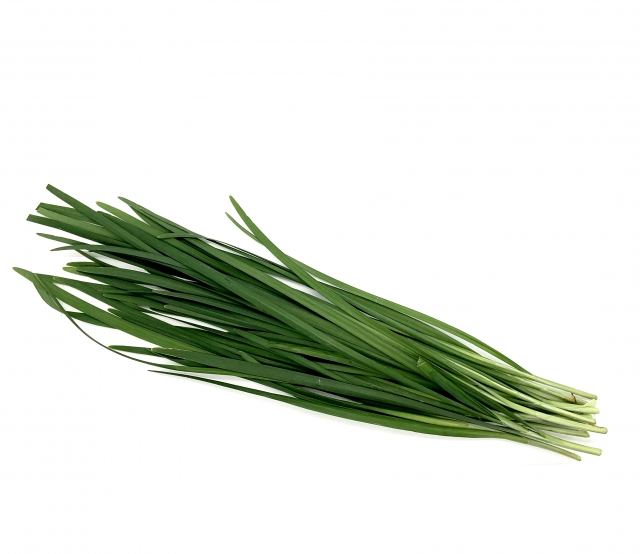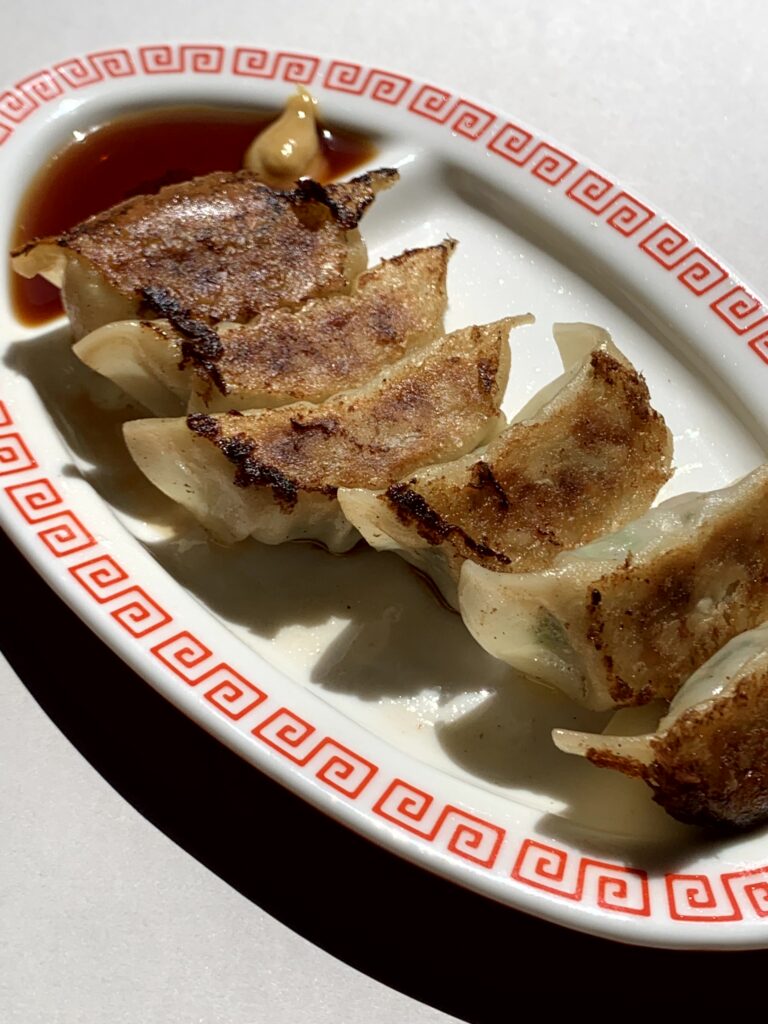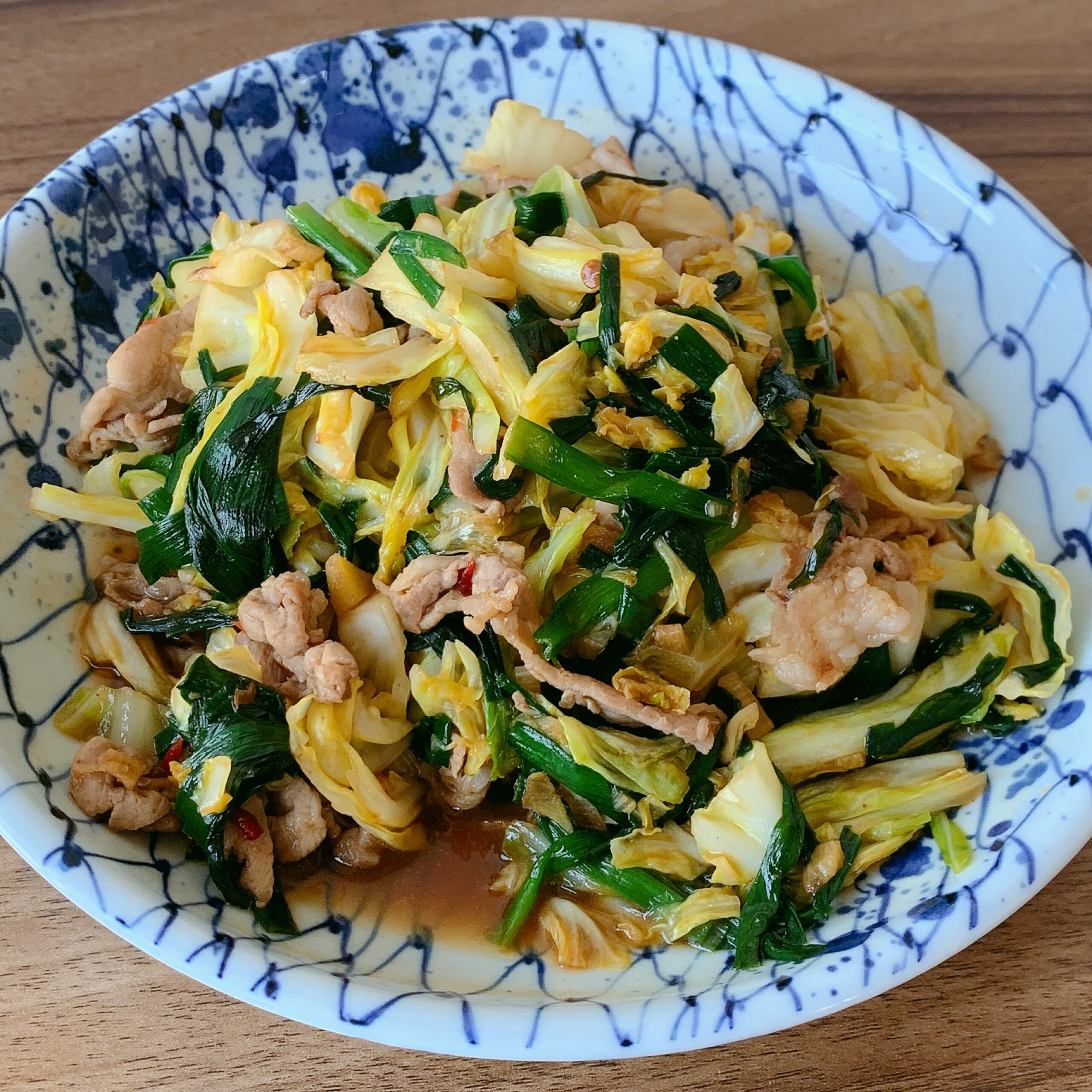
NIRA BUTA(ニラ豚)
What kind of food is Nirabuta??
nira = Chinese chives buta = pork
Green Chinese chives, cabbage, and pork are stir-fried and seasoned with oyster sauce. It is a prefectural food that is often eaten in Oita Prefecture, Japan.
The slightly sweet sauce is the key to the deliciousness ♡
At a restaurant called Wangfu(王府), people line up to eat the famous “NIRA BUTA”. I made this recipe because I thought it would be nice to eat it at home.
If you use pork belly and double the amount of sauce, you can get the taste closer to the one served at the restaurant.
It is a side dish that goes perfectly with white rice, as it has a strong seasoning and an appetite-inducing aroma.
What kind of food is Chinese chives??
Chinese chive is a green-yellow vegetable of the Liliaceae family, Allium genus, native to China. It looks very similar to green onion or daffodil leaves.
In Japanese, it is written as ” nira (=ニラ) “.
It is resistant to both heat and cold, and has a strong vitality that allows it to be harvested many times from the same plant.
There are three types of chives: green Chinese chive(ha nira), yellow Chinese chive(ki nira), and flower Chinese chive(hana nira).
The most common one is green chinese chive.
Cultivate yellow chives in a way that protects them from sunlight. It is also called ”chive bean sprout (nira moyashi)” because the cultivation method is similar to that of bean sprouts(moyashi).
The good thing about yellow Chinese chives is that they are soft and have a mild aroma, but the content of vitamins and minerals is very low compared to green Chinese chives.
Flower Chinese chive is an edible flower bud and young stem.
Yellow Chinese chives and flower Chinese chives are rarely distributed even in Japan, so I have never eaten them.



Ingredients and properties of Chinese chives
The unique smell of Chinese chives comes from the aromatic component allicin, which is commonly found in alliums and has a strong antibacterial effect.
Allicin increases the absorption of vitamin B1 and is effective in recovering from fatigue, and is said to have the ability to prevent blood clots and increase appetite.
The closer to the roots, the higher the allicin content.
The strong aroma of allicin also eliminates meat odors and promotes the absorption of vitamin B1, making it an excellent companion to pork, which is high in vitamin B1.
Chinese chives also contain a lot of beta-carotene. Since it is fat-soluble, it can be effectively absorbed by cooking dishes that use oil.
In addition, it is a nutritious food that contains vitamin C, vitamin E, minerals such as potassium, calcium, magnesium, and selenium, and dietary fiber, so it has been used as a herbal medicine for its nourishing and tonic effects since ancient times.
It is said to have been introduced to Japan from China during the Yayoi period, and there are descriptions of Chinese chives in the Kojiki, Nihon Shoki, and Manyoshu.
However, it is not popular in Europe and is rarely cultivated.
This is an ingredient that you should try once (*˘︶˘♡)

NUTRITION FACT of Nirabuta (Pork Stir Fry With Chinese Chives)
Nutrition Value Per Person
- 123 kcal
- Protein 7.2 g
- Fat 7.8 g
- Carbohydrates 8.2 g
- Salt equivalent 1.2 g
INGREDIENTS for Nirabuta (Pork Stir Fry With Chinese Chives) (3SERVINGS)
- 1/4 Cabbage (200g)
- Chinese chive (100g)
- Garlic (10g)
- Ginger (10g)
- Sesame oil (5g)
- Pork shoulder loin (100g)
- Salt (1g)
- ☆Oyster sauce (10g)
- ☆Soy sauce (10g)
- ☆Sugar (5g)
- ☆Bean sauce (Doubanjiang) (5g)
Nirabuta (Pork Stir Fry With Chinese Chives) COOKING INSTRUCTIONS
- Cut the cabbage into 1.5cm stripes.
- Cut the chives into 5cm lengths.
- Chop the garlic and ginger.
- Heat the garlic, ginger and sesame oil in a frying pan.
- Place the pork shoulder loin in a frying pan and fry until it changes color.
- Sprinkle salt on the pork.
- Add the cabbage and chives to the frying pan and fry.
- When the cabbage has softened, add the oyster sauce, soy sauce, sugar and chili bean paste, and stir-fry while mixing everything together.
Chinese chives are sensitive to dryness and easily spoil, so use them up as soon as possible. If you have any leftover, you can marinate it in soy sauce and eat it with rice.



コメント